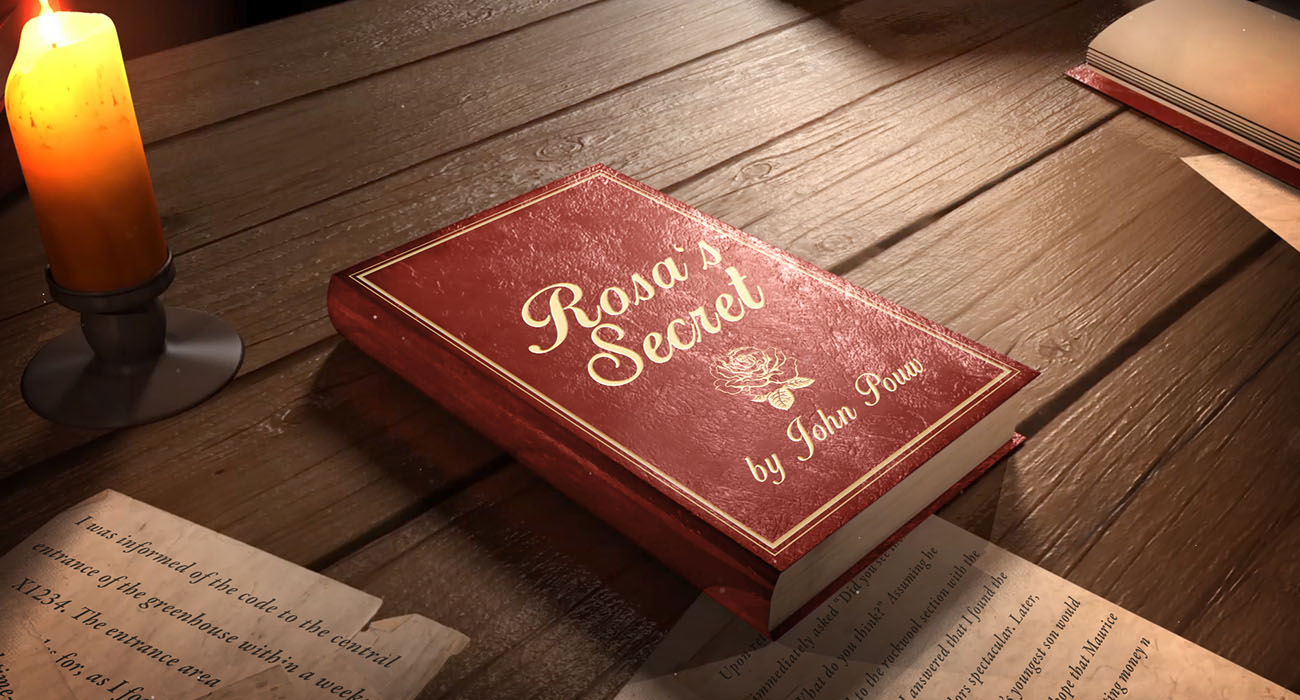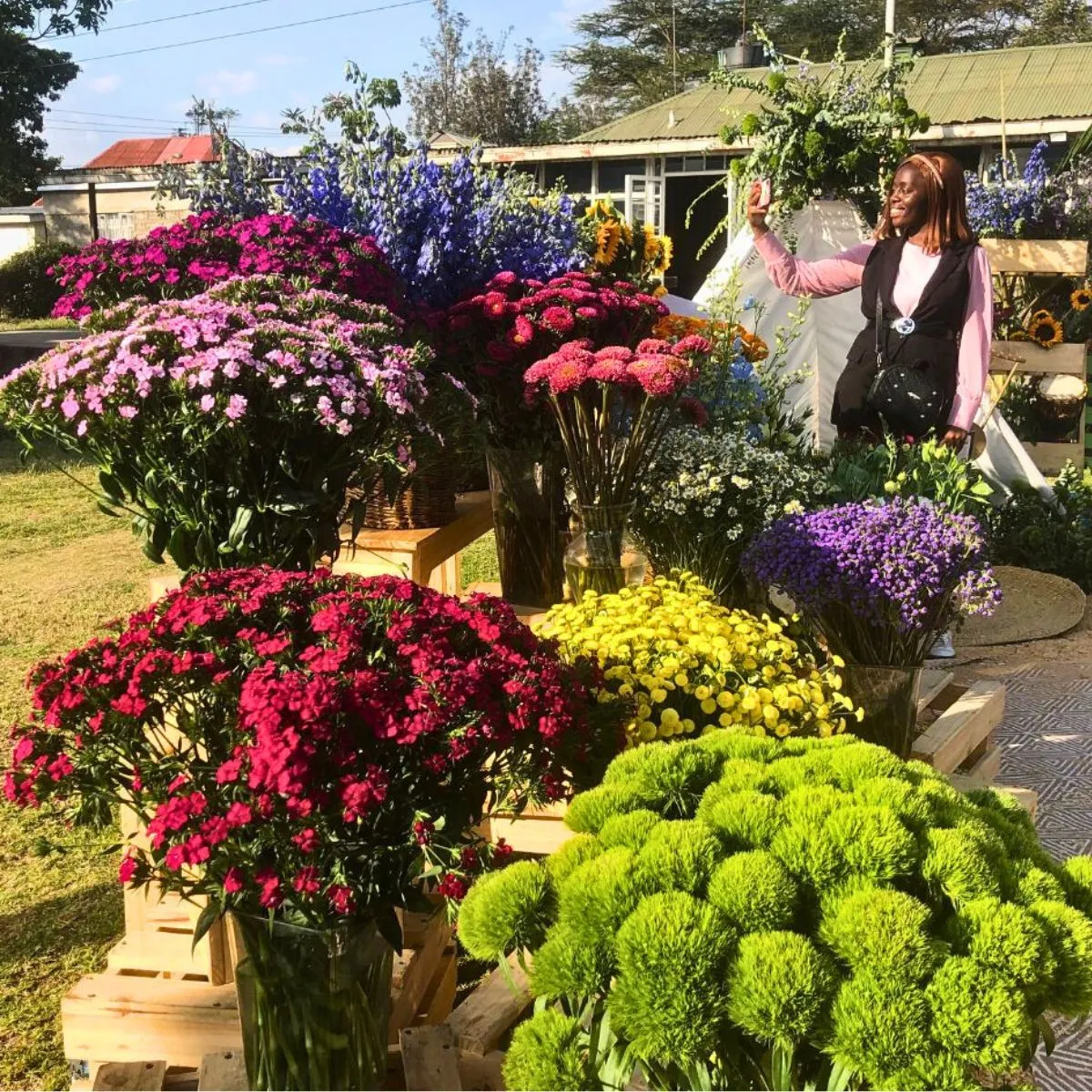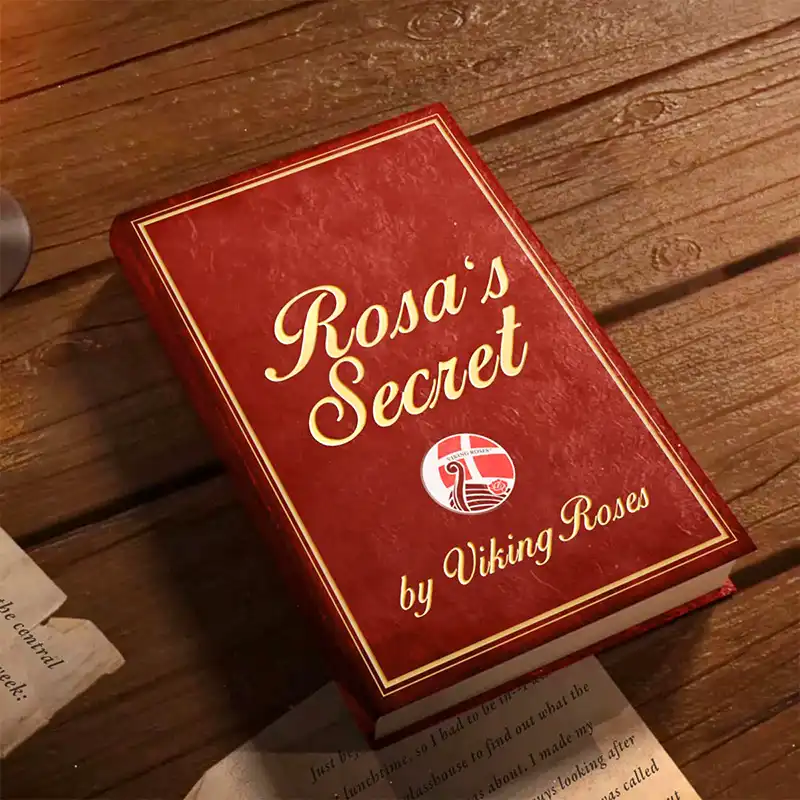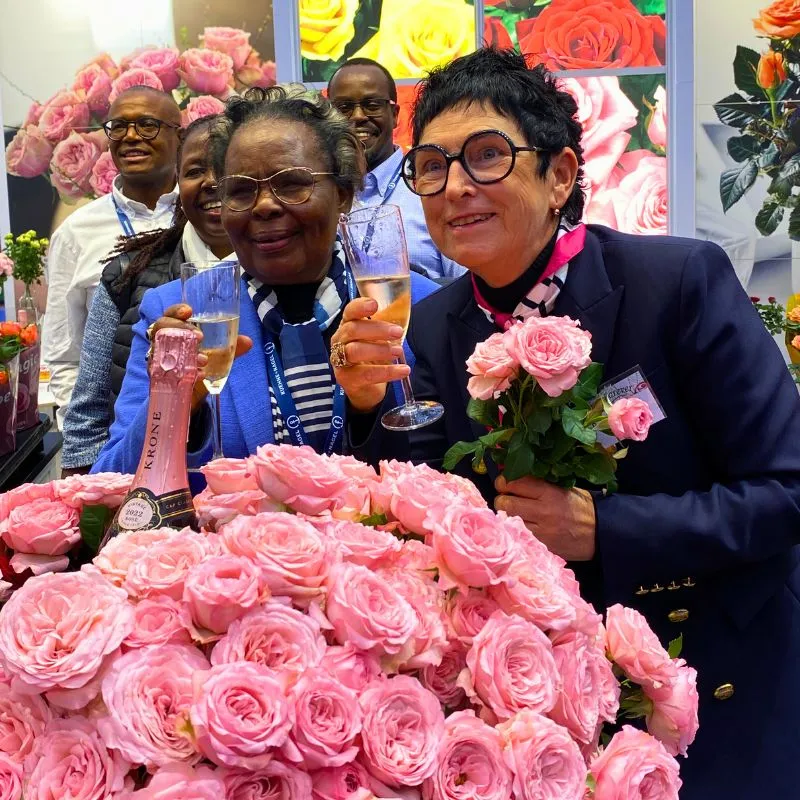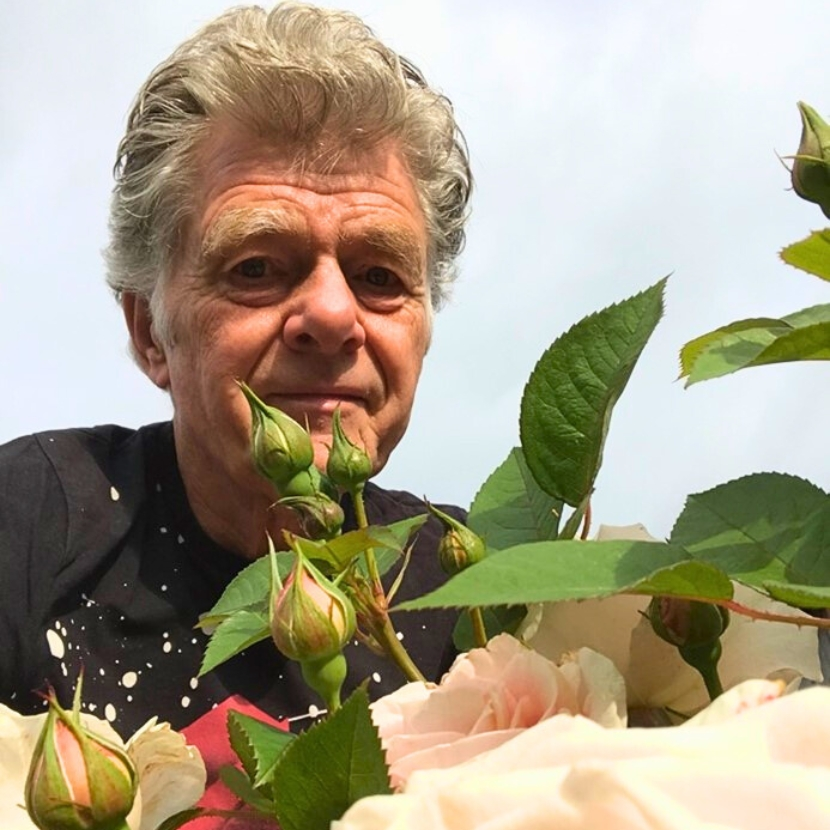“That is good for your international contacts,” Uncle Piet had said when my invitation for International Rose Competition in The Hague and the Jacobszoon Centennial was in the post. “But I don’t know anything about garden roses,” was my reaction. “Go and have a look every now and then at the varieties we have behind the greenhouse,” Uncle Piet continued. “Watch for diseases, rotten flowers, especially after a few rainy days. And during the trials just watch people like Pat Emmett or Sam Cook.” I was not confident, but then, garden roses were not commercially important for Witte de Wit anymore. We still served the occasional die-hard consumer that arrived at the door, looking for a specific old Witte de Wit prizewinner. Maurice loved this. He would go along with the always elderly person to the rear of the land and, after half an hour come back with Hfl. 7.50, including a fifty cents’ tip, for two plants. This, he would put in the bottom of the small money box in his drawer. “For a rainy day”, he would say with a big smile, looking at Father Dré.
The breeding for garden varieties had stopped years ago. Only the selected miniature pot rose varieties were also planted outside to check for disease resistance. It was known that buyers of the plants in the supermarkets would put them in the house and, when they had finished flowering and were still alive, they would plant them in the garden. Dré Junior could help me out with the selection criteria: vigor, fragrance, disease resistance, foliage, flower production, growth habit, and bud and flower form. Seedy then gave me a history on the origin of roses.
With the help of Dré Junior, Seedy had not only collected, but also mastered the collected knowledge. In fact, he even spent his holidays roaming rosaria and castle rose gardens. He explained: “The oldest rose fossils go back 35 million years and the oldest written record stems from 3000 B.C., found in Iraq. The mention as ‘queen of the flowers’ comes from 600 B.C.” Suddenly, the weird artist with the thick greasy glasses and slippers shouting “fucking all day!” became a deadly serious lecturer: “Then, in the Song of Songs we find the Virgin Mary referred to as a ‘rose without thorns’, because of her Immaculate Conception. Gothic cathedrals therefore have a rose window. And did you know that the rosaries our grandmothers used for their prayers to the Virgin Mary, symbolize garlands of roses worn in heaven?” Although I had studied literature, this was all new to me, but made sense. “You know Da Vinci?,’’ he then asked. I was a great fan of the Renaissance and had been in Rome the previous summer primarily to spent two hours staring at the ceiling of the Sistine Chapel. Michelangelo, Da Vinci, Botticelli, Raphael, I could not get enough. Now this eccentric rosefucker had all my attention. “He has a painting, Madonna on the Rocks, with Mary and her baby Jesus amidst flowers and plants. You know, Da Vinci being an atheist, I’m sure Mary here is the symbol of the rose, the queen of flowers.” This seemed a little far-fetched to me, but I liked the story.
“For us today the rose symbolizes romantic love”, Seedy carried on, “but in the Middle Ages it meant both profane love and religious devotion, mystic love. Such a rose you find in Dante's Divine Comedy. The late medieval poem ‘Le Roman de la Rose’ tells the story of a man who has a dream about a rose held prisoner in a castle, here meaning romantic love.” Then professor Seedy burst out laughing: “They referred to the pussy as a rose and prick as nose, and I am smelling roses all day!” Then, serious again, “at that time, roses were cultivated in monastery gardens, especially in France and Switzerland. There are two antiques in roses, ‘Rosa Gallica’ and ‘Rosa Alba’. The Gallica is thought to be the oldest cultivated rose, the ancestor of all European medieval roses. It is also called ‘French rose’, with single, scented, deep pink flowers. It flowers in summer. Of the other type, the Albas, we know ‘White Rose of York’ with pure white, single flowers and matt-green foliage, which was introduced in 1500. Another is ‘Celeste’: beautiful, soft pink, semi-double booms in contrast to the leaden foliage, an old variety of unknown origin. The Albas were already cultivated before 100 A.D.”
He stood up. “But there were more varieties, some of which were supposedly lost. Come and look.” He walked out to the shading hall, to his ‘hobby section’. I followed, baffled by the waterfall of names and data. Here, there was a collection of all sorts of roses, some growing very high with small flowers, others appearing more dead than alive. Each container had a different variety and there must have been more than fifty. He pointed out one with the name ‘Celeste’, another, ‘Cuisse de Nymphe’ with blue-grey leaves and lovely, rather muddled, double, blush pink flowers and a strong, sweet scent. “Another Alba,” he commented. Some plants were not flowering because they had been budded this year and would only flower in the second year.
He pointed out the next one. “This is a ‘Damask Rose’, in Latin ‘Rosa damascene’, also called ‘Rose of Castile’, which is said to have been brought back to Europe by the crusaders. This one is red with double flowers. We will see next year.” The following, a pink, had ‘rubiginosa’ on the label. “This is ‘Rosa eglanteria’ or ‘rubiginosa’, in England called ‘Sweetbrier Rose’. This was cultivated at the end of the Middle Ages. It is disease free and winter hardy. And they say it has complete smell.” Seedy hardly had good smell and so depended on others to decide whether a rose was fragrant or not. This rubiginosa’s foliage smelled of apple and the flower had a true rose scent. “This one I am very proud of. We think it is a ‘Campanian Rose’, which is said to have been lost. It had a reddish-purple blossom, but flowers very briefly in the beginning of spring.” He stopped to bend and search for the next label, which gave me the opportunity to interfere. “Klaus, we need to continue some other time. Father Dré is waiting for me to look at some contracts and I need to be in the office during lunchtime.” When I walked out, he yelled: “Father Dré is the best rose smeller of us all!”
At first, I thought Maurice would take lunch in a local café, but at some point, I saw him take his lunchbox with prepared sandwiches with him, so I assumed he would just sit on a bench enjoying some fresh air at the same time. He was disappointed that he was neither invited for the garden rose competition, nor for the Rose Breeders’ Dinner preceding it.
It appeared to be a tradition, that breeders would take turns to organize the dinner. During a recent visit, Arent Ruighaver had indicated it was Witte De Wit’s turn, to which Father Dré reacted that it would be an excellent opportunity for me to introduce myself by taking on the organization of the dinner. Of course, Dré and Piet would coach me. They suggested a budget, which was approved by Maurice and Sjef.
‘t Goude Hooft in The Hague was the fixed annual location, so it was only deciding on the menu and wines, carried out by Dré, Piet and Maurice. I must say, that the location was perfect for the old boys’ ensemble. Ruighaver somehow hosted the event, deciding on seating arrangements and introducing me as Dré’s successor. I ended up sitting at the end of the long table, next to Herr Werner Noack, of Rosen Noack, then 82, only speaking German, breeder of Heidetraum®, internationally launched by his Australian agent, and falling asleep halfway through the dinner.
The competition in The Hague was in the Westbroek Park, every year in the first week of July. In fact, it was part of some unofficial tour. Members of the group of breeders, acting as international jurors, would start in Barcelona (Spain) in the beginning of May, then move to Rome (Italy), Monza (Italy), Madrid (Spain) and Lyon (France); in June to Nantes (France), Paris (France), Baden-Baden (Germany), Baden bei Wien (Austria), St. Albans (England) and Kortrijk (Belgium); in July to The Hague (Netherlands), Dublin (Ireland) and Belfast (Ireland); in August to Glasgow (Scotland); in September to Le Roeulx (Belgium) and Orléans (France); in October to Rose Hills (USA) and Adelaide (Australia); and in November to Hamilton (New Zealand). All breeders would be present in Baden-Baden and The Hague. The Golden Rose of The Hague was the biggest trophee to be won, in terms of prestige. Commercially, an AARS (All-American Rose Selection) title was the best.
It was a beautiful sunny day in a likewise location. I had never been in the Westbroek Park before, let stand any rosarium. The party met for coffee and cakes in the restaurant, the men in nice summer suits, the women in colorful dresses. After a word of welcome, we set out in the gardens armed with lists of names in different categories, pencil and eraser. All the old boys were here, walking around in small groups or pairs, the spouses forming separate groups. Besides looking at and judging roses, I was busy shaking hands with the breeders I met at San Remo and the previous evening, and others being introduced to me. There were some distinct leaders. Arent Ruighaver’s entourage included Hendrik Jacobszoon, Frank Tasman from New Zealand, Rosie Rhodes (the only woman judge) and Keith Bartram from Jackson & Perkins. Alain Ferry walked around with Paul Schmidt, Winfried Ryckmans and Ivan De Wildeman, both Belgian. Wilhelm von Bismarck was joined by Werner Noack, Omer Jefferson Jr. and Harry Philip from Australia. Pat Emmett, Gareth Penn and Paul Hawkins formed the British team. Mogens Bothildsen was accompanied by his wife and Sam Cook was on his own, taking big strides from one bed with varieties to the next, then taking all his time to study and hammer them and write down his marks. In total there must have been representatives of some thirty breeding companies present, mainly the owners. Surprisingly, David Constable was not present.
Sam had brought a stick with which he was hitting the rosebushes. Pat was kicking them every now and them. I was surprised by this SM element in the love for roses. Uncle Piet explained that an important characteristic of a good garden rose is that it ‘cleans’ itself in the wind, so that the old blooms do not rot. It was a colorful spectacle.
After finishing, several of the leaders wandered off together and several others lingered at the last few beds before going back to the restaurant. After a few minutes the leaders returned to their flock, some final scores were noted, and the lists were handed in with the organizing committee. Aperitifs followed, some strolling through the garden and then, at 3.30 p.m., the announcement to board the special buses for the visit to Jacobszoon Rozen in Hazerswoude. Jacobszoon was founded in 1890 and chose the occasion of the International Rose Competition for a celebration. Being neighbors, Dré and Sien and Piet and Jo had come by car. I sat in the back of the Mercedes.
The new company sign shone in the afternoon sun: Royal Jacobszoon Rozen. In groups we toured the premises with sections of cutrose trials of various breeders and a propagation area, where half-year-old bushes were made in winter and ‘zetlingen’, grafted plants, in other times of the year. Jacobszoon did not breed.
During the grand and luscious buffet dinner the different prize winners were announced. There were various categories such as ground covers, climbers, but the two prominent were the prize for the most fragrant rose and, of course, the Golden Rose of The Hague. A regular jury of the garden staff had made five selection tours in different times of the year, to which the scores from the international jury were added with factor three. There were runners-up, bronze, silver and gold prizes in each category, so that each breeder present or his Dutch representative would go home with several prizes.
The most fragrant rose was ‘Braveheart’ from breeder Cocker and, finishing the evening, the Golden Rose was awarded to the variety ‘Rock’n Roll’ from Sam Cook. Some flowers were brought in and, one thing was sure, Sam had given the perfect name for this orange-red rose with a white center and thin white edge along the petals. When, much later, I came across a survey of winners of the Golden Rose, I saw Witte de Wit with ‘Helga’ in 1977 and ‘Orange Sensation’ in 1968. But, more interestingly, all breeders had won at certain intervals.

